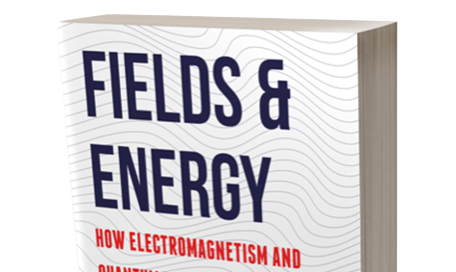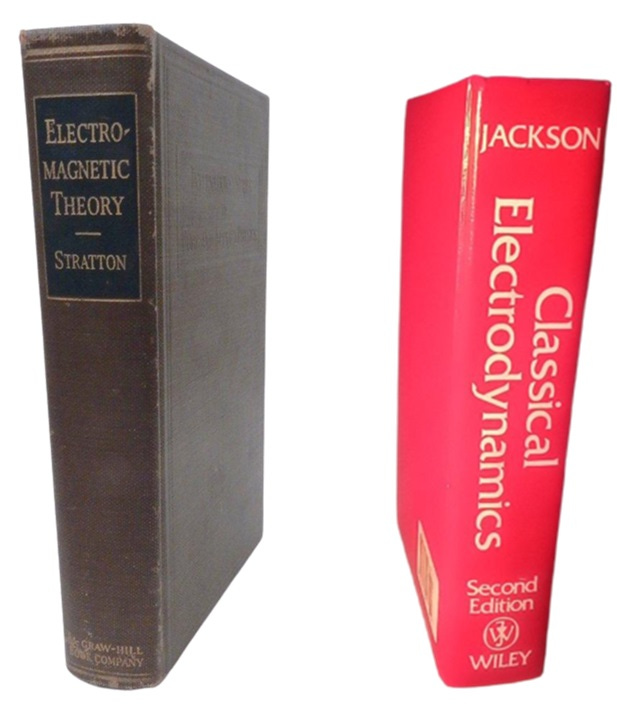What’s the go o’ that?” a three-year old James Clerk Maxwell (1831–1879) would ask his elders. If not satisfied with the answer, he’d demand, “What’s the particular go of it?” [[i]] That’s the spirit that drove him to compile and finalize the fundamental laws of electromagnetism in the 1860s. Many of us start out life with that kind of youthful curiosity. We want to know how things work. We want to know why they do what they do. Those who retain that spark of interest in how and why reality works soon come to a fork in the road.
They can focus on the “how.” They can pursue studies in engineering. They can figure out how things work. They can apply their knowledge and understanding of reality in practical applications.
Or they can focus on the “why.” They can pursue studies in science and particularly physics. They can figure out why reality works the way it does. They can uncover and understand what basic rules govern its behavior.
Unless they are careful to nurture and sustain that youthful spark, however, both physicists and engineers alike will see their desire to understand how and why reality works dissolve into an attitude of “shut up and calculate” under the demands of their chosen professions.
Physicists have identified four different fundamental phenomena that govern reality: gravity, electromagnetism, and the weak and strong nuclear forces. The physics of everyday experience is the physics of gravity and electromagnetism. While gravity governs the motion of the planets and projectiles and holds us down on Earth, most everything else we experience from light, to heat, to chemistry, all rely fundamentally on electromagnetism. Engineers have put the principles of electromagnetism to work in the myriad inventions that underlie the digital and wireless revolutions.
Sadly however, physicists and engineers don’t talk much to each other about electromagnetism these days. It wasn’t always that way.
During the Second World War, physicists and engineers worked together perfecting radar. They used the same books, including the excellent Electromagnetic Theory by Julius Adams Stratton (1901–1994), published in 1941. Stratton’s book merged rigorous electromagnetic theory with a host of practical applications like waveguides, antennas and arrays, surface waves, coaxial lines, and propagation of radio waves over the Earth.
Some fifty years later in 1991, when I studied electromagnetism in physics graduate school, the standard text was Classical Electrodynamics by John David Jackson (1925–2016). Jackson omits the more practical coaxial lines and only discusses simple waveguides. Jackson discusses antennas – albeit briefly – but doesn’t address arrays. Nowhere does Jackson address surface waves or propagation of radio waves over the Earth. In short, Jackson presented only a severely truncated subset of the practical, applied electromagnetics Stratton taught physicists a half century earlier.
Applied electromagnetism has made great progress since Stratton’s day. We can characterize antennas by their gain and aperture and analyze their links using Friis’ law. We now understand fundamental physical limits on the size and performance of antennas. The concept of field impedance has come into its own, and engineers devised a wealth of practical microwave techniques, like Smith Charts, for studying transmitted and reflected electromagnetic waves.
Jackson taught none of this theory and none of these applications. Today, an understanding of the practical aspects of antennas and electromagnetic wave propagation involves conceptions which are unfamiliar to the ordinary physicist. Not only has physics education failed to keep up with advances in applied electromagnetism, but today, modern theoretical physics has regressed to an understanding of applied electromagnetism more crude and more primitive than that achieved by physicists eighty years ago.
I naïvely thought my Ph.D. in theoretical electromagnetic physics would allow me to work in applied electromagnetism. It took another few years to realize my error, get up to speed on the latest developments in applied electromagnetism, and land my first professional job designing ultrawideband antennas. By synthesizing my combined engineering and physics background, I made a wide variety of breakthroughs. These included over forty inventions for ultrawideband antennas, near-field wireless systems, electrically-small antennas, and related applications. I derived link laws that allowed the pioneering work of radio engineer Harald Friis (1893 – 1976) to be extrapolated into the near-field region, I found a simple formula for determining the gain of small antennas, and – of particular relevance to this book – I devised a novel theory of how electromagnetic fields guide the flow of energy.
To do all this, I had to develop simple conceptual models of what electromagnetism is and how it works. What are fields? What is energy? We have mathematical definitions well-connected to experimental validation, but no one really knows the fundamental reality of what they are. Nevertheless, my insights help us understand that they are two separate and distinct yet cooperating phenomena that work together to give rise to the physical effects we call electromagnetism.
The simplicity of my approach makes it difficult to accept. My insights are entirely consistent with Maxwell’s equations, the basic laws of electromagnetism. My conclusions diverge from conventional thinking only in a few fringe cases where my approach avoids crazy results like runaway acceleration of charges due to radiation reaction and the problem of renormalization due to infinite “vacuum energy.” Engineers – like their physicist colleagues – usually prefer to “shut up and calculate.” They don’t care so much how something works or what’s “really” going on. Instead they want to solve a problem and move on to the next one.
I was excited by my discoveries, and I wanted to share them. One journal to which I submitted it refused to send it out for peer review. Another took a look and, noting that I had included as an example how similar behavior occurs with waves and energy in elastic materials, also rejected my paper outright. Professor Raj Mittra (1932– ) finally accepted my paper for publication in a regrettably obscure online journal he editted at e-fermat.org. Disappointed at how my results were buried and ignored, I decided to take my discovery over the heads of the technical journal editors and present them directly to my colleagues.
I spoke at USC and UCLA in Los Angeles. I lectured at Baylor University and the University of Texas at Austin. I addressed IEEE chapters in San Diego, Indianapolis, and Huntsville, Alabama. I spoke at Virginia Tech and at the Antenna Applications Symposium hosted by the University of Illinois at Robert Allerton Park. I delivered seminars at Newcastle University, at the James Clerk Maxwell Foundation in Edinburgh, and at Queen Mary University in London. My talks were well-received. In only one instance did a distinguished colleague stand up during a talk and publicly call out my work and conclusions as bogus. He had the honor and integrity to send a follow-up email to the attendees the following day acknowledging that I was correct (although we still disagree on certain interpretations). Nevertheless, I did not gain any significant traction in the electromagnetics community. Even arXiv, the supposedly “open” forum for physicists to share papers, refused to accept my submission.
I decided to pursue two parallel paths.
First, I decided to write a science fiction treatment of my ideas to make them more accessible to a general audience. I remain astonished that Hertz, Heaviside, Fitzgerald, Lodge, and Maxwell’s other immediate successors failed to uncover the simple insights I stumbled across more than a century later. What if they had? What if the result had been suppressed by an evil conspiracy? After all, Hertz, Fitzgerald, and even Maxwell himself died young. Could it have been murder? And what if that conspiracy were the secret masterminds who pull the strings behind all the other groups and coalitions people think are trying to run the world?
I set my stories in an alternate history timeline, because I was afraid such far-fetched and outrageous concepts as hopelessly corrupt government agents doing the bidding of their evil technocratic and oligarchical overlords in a massive plot to establish totalitarian social control over global society might defy readers’ suspension of disbelief.
While a number of readers have expressed their delight at realizing the physics actually works out as described in my novels, far more enjoy just reading them: “…[A] masterpiece of alternative-history techno-thriller science fiction.” “Like a Heinlein juvenile, but frankly, better.” You can check out The Hidden Truth and its sequels and judge for yourself.
Second, I decided to seek the gold standard for accepted science: a peer-reviewed publication in a high-profile journal. I succeeded, and in 2018, my paper, “Energy Velocity and Reactive Fields” appeared in the Philosophical Transactions of the Royal Society A, one of the top scientific journals in the world.
Still, I remained disappointed that it was proving so difficult to gain traction. A vast number of papers flood the journals every year, and it’s hard to pick out the signal from the noise.
While my paper was still in process, I had a fateful dinner with my friends, science fiction grandmaster, John C. Wright, and his similarly talented wife, L. Jagi Lamplighter Wright. I shared my frustrations. “What is this theory of yours?” they asked.
I explained it.
They got it.
And the lightbulb turned on for me.
My problem wasn’t that I had a new theory too complicated to explain to the typical physicist or engineer. If intelligent well-read people without deep formal training in science and engineering grasp it so easily, any beginning science or engineering student should have no difficulty. The problem was that conventional wisdom is too deeply engrained in the minds of most physicists or engineers for them to be able to step back and consider a novel perspective. Conventional wisdom works so well that it becomes difficult for practitioners immersed within its framework to step back and question their fundamental premises.
I realized I can explain how electromagnetism works to a general audience: to interested non-scientists and non-engineers, to beginning students, just starting out, and to the few practitioners open-minded and objective enough to understand what electromagnetism really is and how it works. This is the book I wish were available to me when I started my career: a book about what electromagnetism is, how it works, and how we figured it out. My work also leads to the inescapable conclusion that the so-called “pilot-wave” interpretation of quantum mechanics is the necessary and logical extension of classical electromagnetic energy flow into the quantum realm.
On one level, this approach applies a fundamental principle of scientific advancement first identified by the physicist, Max Planck (1858–1947). “A great scientific truth does not triumph by convincing its opponents and making them see the light,” Planck argued, “but rather because its opponents eventually die, and a new generation grows up that is familiar with it” [[ii]].
On yet another level, this work is broadly subversive of the contemporary fetishization of scientific authority. American physicist Richard Feynman (1918–1988) once wisely defined science as “…the belief in the ignorance of the experts” [[iii]]. Today we are commanded instead to just believe what the experts tell us. “If we need scientific information, we should go to the scientists who have dedicated their lives to learning about the matters at stake” [[iv]]. We are told “…we should trust science” [[v]]. They say things like, “Questioning authority [is] killing people,” [[vi]] “Critical thinking… isn’t helping,” and “Don’t do your own research” [[vii]]. But scientistry – the profession of science – is not the same thing as scientody – the process and methods of science [[viii]]. What if the scientistry is quite simply wrong? On a question fundamental to the nature of reality? And in a way that is almost trivially easy to understand? And doesn’t that call into question whether today’s scientistry is worthy of our trust?
On a still more personal level, the work to research and write this book was profoundly therapeutic. I discovered that the usual story of scientific progress was a pale reflection of the truth. Scientists flatter themselves with the myth that progress is a streamlined affair in which discovery builds incrementally upon discovery in a linear progression with an occasional great revelation that upsets the accepted worldview over a period of a decade or two.
Once I started looking, however, I realized that the scientific story of reality involves fundamental concepts like waves versus particles, two approaches to understanding the nature of reality that vied with each other over the course of millennia. One dominates one century, the other dominates the next, and an unholy synthesis of wave and particle dominates our present age. This book will demonstrate that the current synthesis is not only an incomplete description of reality, but also largely false.
Science itself also oscillates between an Aristotelian phase in which scientists discover new facts and formulate new concepts through induction, and a Platonic phase in which scientists develop or deduce elaborate theoretical models from more fundamental premises. Today we reside in an era of peak Platonism whose contradictions and shortcomings are ripe for disruption by the next Aristotelian wave.
I also learned how very frequently someone ends up with a clever breakthrough idea decades ahead of his peers only to have his idea overlooked or actively rejected. Electromagnetic pioneer James Clerk Maxwell (1831–1879) rediscovered the work of Henry Cavendish (1731–1810) from nearly a century earlier. In our own time, wireless engineers and scientists are rediscovering millimeter wave physics pioneered by Jagdish Chandra Bose (1858–1937) in the 1890s.
Even electrical discoverers whose names are now memorialized as physical units like André-Marie Ampère (1775–1836) and Georg Simon Ohm (1789–1854) suffered the ostracism of their peers for their unconventional ideas. Other innovators like John Herapath (1790–1868) and John James Waterston (1811–1883) made fundamental discoveries that were actively suppressed by their peers. They were forgotten, and the wisdom of their ideas was only appreciated decades later. That’s not to say that all conclusions dismissed by mainstream science are novel breakthroughs, of course. However, a shockingly large fraction of novel breakthroughs do go through a phase in which their merit is under-appreciated or unappreciated, their discoverers subject to neglect and outright hostility. I’ll be telling these stories and more.
I’ve lived and practiced electromagnetism for decades, but you never really learn a subject until you try to teach it. By writing this book, I’ve come to understand electromagnetism in particular and the process of science in general far better than I did before.
That’s my journey in a nutshell.
Yours is about to begin, if you choose to follow the trail I have broken for you.
Have you ever speculated how reality works?
Is it particles interacting with each other, or non-local fields doing the heavy lifting, or somehow both at the same time?
Have you wondered how scientists try to answer questions like that?
Have you been bothered by some of the weird notions proposed as the leading edge of contemporary physical thought? Notions like “the observer creates reality” or the belief in a multiverse in which “everything that can happen does happen” or the idea that a spooky action-at-a-distance connects “entangled” particles.
Have you questioned how scientists came to those conclusions and why?
Would you like to learn some new and better answers?
If these questions trouble or intrigue you, then you have a problem… and an opportunity.
I can be your tutor to escape conventional thinking and conclusions on these questions.
I can offer you some unique answers you will find nowhere else.
I can introduce you to a novel re-interpretation of reality – a re-interpretation that I think is as fundamental as the leap from a flat earth to a spheroidal earth, or the leap from geocentrism to heliocentrism.
I can assist you through the difficult process of opening your mind, changing your perspective, and acquiring a new set of glasses through which you can perceive previously unappreciated aspects of reality.
I can guide you along an intellectual journey, so you can be one of the first to understand and appreciate this new viewpoint.
However, the first step is not mine, but yours.
You have to agree to join me on this journey.
The path will not always be easy. It will be fraught with skepticism and resistance. There is no royal road to knowledge, and a fundamental change in mindset is always difficult. I can show you the way to go, but you are the one who must take the steps, do the work, and learn what I have to offer you. All I can promise is that if you commit to follow me, I will be with you every step of this road less traveled. It is a path I know well. I will share with you the same insights and revelations that helped me overcome my own reluctance and transform my own thinking.
To paraphrase an old Chinese proverb, the journey of some five hundred pages, a thousand references, and over a hundred thousand words begins with the first page of Chapter 1.
Hans G. Schantz
Big Cove, Alabama, USA
December 2021
[i] Campbell, Lewis, and William Garnett, The Life of James Clerk Maxwell with Selections from his Correspondence and Occasional Writings, London: Macmillan and Company, 1884, p. 16.
[ii] Planck, Max. 1968. Scientific Autobiography and Other Papers. New York: Philosophical Library.
[iii] Feynman, Richard, “What is Science?” he Physics Teacher Vol. 7, issue 6, 1969, pp. 313-320. Presented at the fifteenth annual meeting of the National Science Teachers Association, 1966 in New York City.
[iv] Oreskes, Naomi, “Science Isn’t Always Perfect—But We Should Still Trust It,” Time, October 24, 2019. See: https://time.com/5709691/why-trust-science/
[v] Ibid
[vi] Cross, Al, “Questioning authority has become too much of a good thing, and it’s killing people,” Northern Kentucky Tribune, September 23, 2021. See: https://nkytribune.com/2021/09/al-cross-questioning-authority-has-become-too-much-of-a-good-thing-and-its-killing-people/
[vii] Siegel, Ethan, “You Must Not ‘Do Your Own Research’ When It Comes To Science,” Forbes, July 30, 2020. See: https://www.forbes.com/sites/startswithabang/2020/07/30/you-must-not-do-your-own-research-when-it-comes-to-science/?sh=3c2bd933535e
[viii] Day, Vox, “We do appreciate the courtesy,” Vox Populi Blog, March 6, 2007. See: https://voxday.net/2007/03/06/we-do-appreciate-courtesy/.






